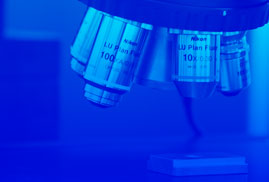The aim of this work has been to contribute to the knowledge and improvement of the performance of in-situ composites formed from thermoplastic and thermotropic liquid-crystalline polymer mixtures. The study had a threefold purpose: First of all, deeper knowledge on the influence of processing the final structure of "in-situ” composites. Secondly, the improvement of the interfacial properties has been influenced by the addition of compatibilizing agents. Finally, the development of new mixtures of liquid-crystalline behaviour from existing liquid-crystalline polymers with the aim of improving the mechanical performance of the reinforcement used in composites.
The study of the influence of the process on the "in-situ" composites was carried out in blends of polypropylene and Vectra©. A special extrusion mixing stage was carried out in order to achieve a suitable homogenization of the mixture and to generate reinforcing fibres. Subsequently, the influence of the temperature in injection moulding on both the pre-generated fibres in the extrusion and the final properties of the composite was analysed.
The improvement of the interfacial properties through the addition of compatibility agents was analysed in two different blends. In the polypropylene and Vectra B950© blend, an ionomer, an ethylene and methacrylic acid copolymer partially neutralised with Zn, presumably compatible with polypropylene and capable of interacting or reacting with Vectra B950© was added. In the blend formed by poly(imide ether) and Rodrun LC5000©, compatibility was attempted through the addition of poly(butylene terephthalate) and poly(ethylene terephthalate). Prior to the study of the compatibility of the system, the characterisation of the poly(imide ether)/poly(butylene terephthalate) blends was required, not previously studied under industrial processing conditions. Also, the existence of reactions between Rodrun LC5000© and the two conventional polyesters, poly(butylene terephthalate) and poly(ethylene terephthalate), was analysed.
Finally, work was done on the development of new thermotropic liquid-crystalline polymers with enhanced properties based on existing and thermotropic liquid-crystalline polymers. Four different blends were studied: Rodrun LC5000©/ Rodrun LC5300©, Vectra A950©/ Vectra B950© and Rodrun LC5000©/ Vectra A950©. The blends were all obtained by direct injection moulding. Subsequently, the usefulness of the Vectra A950©/ Vectra B950© blend was raised, which showed the best performance, to reinforce both polypropylene and poly(imide ether), in order to quantify the obtained improvements.


